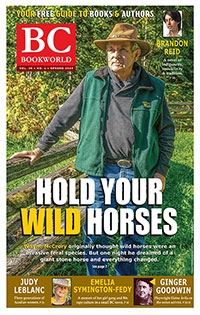In the fall of 1900 the young linguist John Swanton (1873-1958) took the steamer Princess Louise north from Victoria towards Haida Gwaii and received his first Haida lessons on board from master carver Daxhiigang, known in English as Charlie Edenshaw (1839-1920). Swanton's way was charted by his mentor, anthropologist Franz Boas, who understood the need to document Haida culture during a period when the overall Haida population was estimated at 1,000, having fallen from approximately 12,000 in five decades. John Swanton arrived in Haida country from Harvard when the Haida were being ravaged by European diseases, exploited by the fur trade and assimilated by the missionaries. More than 90 per cent of Haida villages were abandoned. Swanton found approximately 700 Haida in the mission villages of Skidegate and Masset. Swanton hired a teacher, guide and assistant named Henry Moody to help him accurately record the first written pieces of Haida literature from an hereditary chief named Sghiidagits. Swanton paid his co-worker Moody $1.50 per day, six full days a week. He paid poets, singers and storytellers 20 cents an hour and budgeted $35 per month, a princely sum at the turn-of-the-century, for this purpose. "If we compare these rates to Swanton's own workload and salary, we will find that he was paying his Haida colleagues pretty much the same hourly rate he was making himself,"; Robert Bringhurst has written.
During the year that followed Swanton transcribed the oral work of Haida poets, most notably Skaii (John Sky) and Ghandl (Walter McGregor), the 'Homer' of Haida literature, who was born around 1851 on the northwest coast of Moresby Island. Compiled by Robert Bringhurst, Nine Visits to the Mythworld: Ghandl of the Qayahl Llaanas (2001) includes the stories told to Swanton by Ghandl, a Haida man in his fifties, blinded by either smallpox or measles. His name Ghandl means creek or fresh water. A missionary christened him Walter McGregor. Swanton and Ghandl spent approximately a month painstakingly dictating and recording poetry. "Why Ghandl of the Qayahl Llaana of Qaysun has not also been adopted with full honours into the polyligual canon of North American literary history I do not know,"; writes his translator Bringhurst. "He seems to me a great deal more accomplished-and therefore far more worthy of celebration as a literary ancestor-than any Canadian poet or novelist who was writing in English or French during his time."; Ten years earlier Bringhurst had written, "There is no guarantee that the oral traditions of the Haida, the Hopi or the Navajo was inherently greater than that of other groups.";
[See SKAAY, Bringhurst, Swanton entries]
BOOKS:
Ghandl. Nine Visits to the Mythworld (Douglas & McIntyre, 2001). Robert Bringhurst (translator).
[BCBW 2004]
During the year that followed Swanton transcribed the oral work of Haida poets, most notably Skaii (John Sky) and Ghandl (Walter McGregor), the 'Homer' of Haida literature, who was born around 1851 on the northwest coast of Moresby Island. Compiled by Robert Bringhurst, Nine Visits to the Mythworld: Ghandl of the Qayahl Llaanas (2001) includes the stories told to Swanton by Ghandl, a Haida man in his fifties, blinded by either smallpox or measles. His name Ghandl means creek or fresh water. A missionary christened him Walter McGregor. Swanton and Ghandl spent approximately a month painstakingly dictating and recording poetry. "Why Ghandl of the Qayahl Llaana of Qaysun has not also been adopted with full honours into the polyligual canon of North American literary history I do not know,"; writes his translator Bringhurst. "He seems to me a great deal more accomplished-and therefore far more worthy of celebration as a literary ancestor-than any Canadian poet or novelist who was writing in English or French during his time."; Ten years earlier Bringhurst had written, "There is no guarantee that the oral traditions of the Haida, the Hopi or the Navajo was inherently greater than that of other groups.";
[See SKAAY, Bringhurst, Swanton entries]
BOOKS:
Ghandl. Nine Visits to the Mythworld (Douglas & McIntyre, 2001). Robert Bringhurst (translator).
[BCBW 2004]
Articles: 1 Article for this author
GHANDL SUMMARY #2
Info
In the fall of 1900 the young linguist John Swanton (1873-1958) took the steamer Princess Louise north from Victoria towards Haida Gwaii and received his first Haida lessons on board from master carver Daxhiigang, known in English as Charlie Edenshaw (1839-1920). Swanton's way was charted by his mentor, anthropologist Franz Boas, who understood the need to document Haida culture during a period when the overall Haida population was estimated to be as low as 1,000.
John Swanton arrived in Haida country from Harvard when the Haida were being ravaged by European diseases and assimilated by the missionaries. More than 90 per cent of Haida villages were abandoned. Swanton found approximately 700 Haida in the mission villages of Skidegate and Masset. Swanton hired a teacher, guide and assistant named Henry Moody to first help him accurately record Haida stories and oral history from an hereditary chief named Sghiidagits. Swanton paid his co-worker Moody $1.50 per day, six full days a week.
Swanton also paid poets, singers and storytellers 20 cents an hour and budgeted $35 per month, a princely sum at the turn-of-the-century, for this purpose. "If we compare these rates to Swanton's own workload and salary,"; writes editor Robert Bringhurst, "we will find that he was paying his Haida colleagues pretty much the same hourly rate he was making himself.";
During the year that followed Swanton transcribed the oral work of Haida poets, most notably Skaay or Skaii (John Sky) and Ghandl (Walter McGregor), the "Homer"; of Haida literature, who was born around 1851 on the northwest coast of Moresby Island. The other three main storytellers were Kingagwaaw, Haayas and Kilxhawgins.
Bringhurst's first critical explorations of Swanton's work in his effort to revive the stories of Skaay, Ghandl and their Haida contemporaries was A Story as Sharp as a Knife: The Classical Haida Mythtellers and Their World (1999).
Compiled by Robert Bringhurst, Nine Visits to the Mythworld: Ghandl of the Qayahl Llaanas (2001) features stories told to Swanton by Ghandl, a Haida man in his fifties, blinded by either smallpox or measles. The name Ghandl means creek or fresh water. A missionary christened him Walter McGregor.
Swanton and Ghandl spent approximately a month painstakingly dictating and recording poetry. "Why Ghandl of the Qayahl Llaana of Qaysun has not also been adopted with full honours into the polylingual canon of North American literary history I do not know,"; writes Bringhurst. "He seems to me a great deal more accomplished-and therefore far more worthy of celebration as a literary ancestor-than any Canadian poet or novelist who was writing in English or French during his time.";
Ghandl's style was rhetorical and unfettered by overt cleverness, as evidenced by the outset of "The Way the Weather Chose to Be Born,"; the opening selection in Nine Visits to the Mythworld.Bringhurst's version begins:
"There was a child of good family, they say, / at Swiftcurrent Creek. / And her father had one of his slaves / constantly watching her. / She said to the slave, / "Tell that one I want to make love to him."; / The day after that, / when she was out of doors with the slave, / she asked if he'd said / what she told him to say.
"And the slave said to the young woman, / "He says he's afraid of your father."; / But the slave had spoken to no one. / The slave was in love with her, they say. / When she had decided on somebody else, / she gave the slave the same instructions. / He failed again to deliver the message. / He told her again / that the man was afraid of her father.
"After sending the message to each of her father's ten nephews, / the one of good family made love with the slave, they say. / And her father found out what had happened. / So they all moved away from her, they say. / And no one but her youngest uncle's wife / left food for her, they say.";
"She went digging for shellfish, they say. / After a while, she dug up a cockleshell. / The cry of a child came from inside it....";
Aboriginality (2005)
 Home
Home



